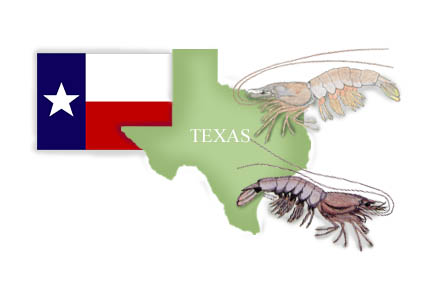Red Snapper
 Red snapper (Lutjanus campechanus) bycatch has been another major concern in the Gulf of Mexico shrimp fishery. The red snapper fishery in the Gulf of Mexico is considered overfished and is in a rebuilding plan. The rebuilding plan was put in place in 2001 with the goal of rebuilding the Gulf snapper stock by 2032. This rebuilding plan included a significant reduction in juvenile red snapper bycatch in the Gulf shrimp fishery, and the Shrimp FMP has gone through several amendments to reduce red snapper and finfish bycatch (GMFMC Amendment 9, 2006 Regulatory Amendment, Amendment 14). The bycatch reduction target for juvenile red snapper in the shrimp fishery has been met and exceeded through the use of BRDs and significant reductions in shrimp effort (Gallaway 2014).
Red snapper (Lutjanus campechanus) bycatch has been another major concern in the Gulf of Mexico shrimp fishery. The red snapper fishery in the Gulf of Mexico is considered overfished and is in a rebuilding plan. The rebuilding plan was put in place in 2001 with the goal of rebuilding the Gulf snapper stock by 2032. This rebuilding plan included a significant reduction in juvenile red snapper bycatch in the Gulf shrimp fishery, and the Shrimp FMP has gone through several amendments to reduce red snapper and finfish bycatch (GMFMC Amendment 9, 2006 Regulatory Amendment, Amendment 14). The bycatch reduction target for juvenile red snapper in the shrimp fishery has been met and exceeded through the use of BRDs and significant reductions in shrimp effort (Gallaway 2014).
Blacknose Shark
Some stakeholders have also raised concern over other commercially and recreationally important species, such as blacknose shark (Carcharhinus acronotus). In 2007, NOAA Fisheries determined that blacknose shark was overfished and experiencing overfishing, and bycatch and associated mortality from the shrimp trawl fishery was considered a factor in the decline of the species. Since this time, the blacknose shark population has been divided into two separate populations: an Atlantic population and a Gulf of Mexico population. The Atlantic population remains listed as overfished, with overfishing occurring; however the Gulf of Mexico stock is currently considered unknown based on the 2011 NOAA Fisheries stock assessment. Raborn et al. (2012) determined that implementation of TEDs was effective in mitigating bycatch of blacknose sharks in the Gulf shrimp fishery since sharks are also capable of escaping trawls through TEDs.
Other Finfish
Other finfish species caught as bycatch across the Gulf are primarily Atlantic croaker (Micropogonias undulates), sea trouts (Cynoscion sp.), longspine porgy (Stenotomus caprinus), and inshore lizardfish (Synodus foetens; Raborn 2014). Based on a study by Raborn (2014), these species are not at risk as a result of the shrimp fishery. BRDs are common across the Gulf of Mexico, decreasing the risks to these species from the shrimp trawl industry.
Previous: Endangered Species Next: Initiatives to Decrease Bycatch




